Car Fridges
How Does An RV Refrigerator Work?
While shopping for an RV refrigerator, there are some factors to remember. The main difficulty comes when deciding which type of RV refrigerator we should go for. There are several choices available.
We will help you to choose which type of RV refrigerator you should select. Many individuals ask how they can keep their meals fresh and cold when traveling. But, it appears difficult since how does an RV refrigerator work?
When going on a road trip, nothing matches the convenience of a stocked refrigerator. Yet, what can you do to ensure that your RV Refrigerator continues to operate well for years to come? Continue reading to learn more!
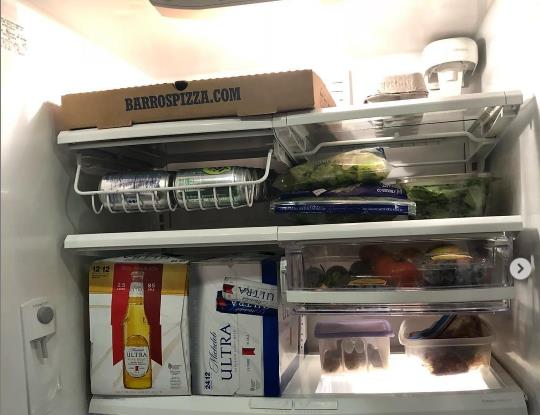
Types of RV Fridges:
There are several types of refrigerators used in RVs. The distinctions can affect the size, cooling capacity, and efficiency of your refrigerator.
1. Compressor Fridge
In this type, the RV refrigerator cools via a compressor unit. These refrigerators operate on either 12 volts or 110-volt electricity. It is the same sort of refrigerator seen in households. So users will be most familiar with it.
While direct current alternatives that operate from the RV’s batteries are less prevalent, the devices are very energy efficient and need little power. The disadvantage is that they are generally more expensive upfront.
Compressor refrigerators are helpful than absorption refrigerators. They can often maintain cooler temperatures even when the outside temperature is high. For cold weather, these refrigerators are your best choice.
2. Absorption RV Fridge
It has been the most often used refrigerator design in RVs throughout the years. It is due to its ability to run on either electricity or propane. You may hear them referred to as “2 way” RV refrigerators or even “3 way” RV refrigerators.
You can always tell if an RV has this sort of refrigerator. How? It will have vents on its exterior at the fridge’s location. When the refrigerator is running on propane to exhaust the heat, ducts come in handy. While it may seem odd, these RV refrigerators use propane to maintain cold using a chemical process.
3. Propane Refrigerator
A propane refrigerator needs a gas tank in your RV and keeps it topped off when it gets low on propane. These freezers include “Auto” mode that helps it to switch from electricity to propane. It is convenient since all you have to do is keep your gas tank topped off.
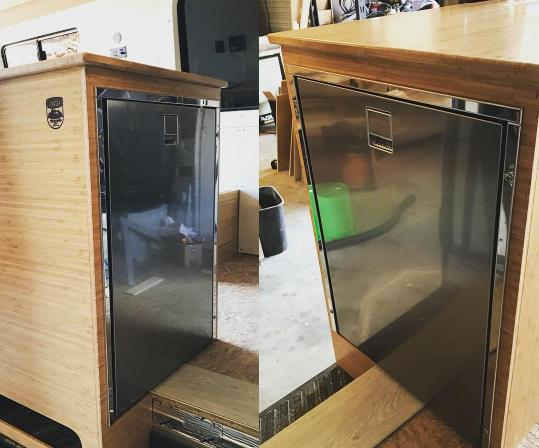
Types of Power Options of RV Fridges
The types of power options of RV refrigerators are:
1. Two-Way Power RV Refrigerators
RV Refrigerators with 2 Way Power RV refrigerators get power from two-three distinct power sources. The majority of RV refrigerators operate on “Two-Way Power.” These refrigerators operate on either 110V or propane gas.
While connecting to a 120V power source gives more constant cooling power than propane. The advantages of LP gas refrigerators enable your RV to be self-contained and go anywhere. And while the potential of fire is always present while operating the RV refrigerator on propane while traveling. Many RVers believe the risk is worth keeping their food as cold as possible during long driving days.
Many manufacturers provide two-way powered RV refrigerators. The most prominent of which are Norcold and Dometic. Both manufacturers offer RV refrigerators with gas absorption technology in various sizes.
2. Three-Way Power RV Refrigerators
Campers may also operate RV refrigerators on “three-way power.” It means that besides 120V conventional electricity and LP gas. RV travelers with three-way refrigerators can also use the unit on 12V power generated by the RV’s batteries.
These 12V RV freezers benefit campers who travel in tiny vehicles such as pop-ups and vans. For instance:
- Due to their compact size, campers may put them in confined areas.
- The electricity comes from your vehicle’s battery – which is safer when traveling.
- They are capable of operating on slopes up to 30 degrees.
- Without combustible refrigeration chemicals, there is no risk of fire or explosion.
- Most models use a chest-freezer configuration. It keeps food colder and consumes less energy than front-facing refrigerators.
- These 12V refrigerators can survive up to 25 years or more due to their fewer components and systems.
These are the driving factors for the prolonged usage of battery-powered freezers in the transportation industry. Another passionate demographic is off-grid living enthusiasts, who prefer DC-powered freezers for isolated areas.
And while these refrigerators have a long history of being energy guzzlers that can drain a vehicle’s battery. Modern 12V refrigerators from manufacturers such as Whynter and National Luna are more efficient than ever. Thanks to integrated sensors that help prevent dead batteries.
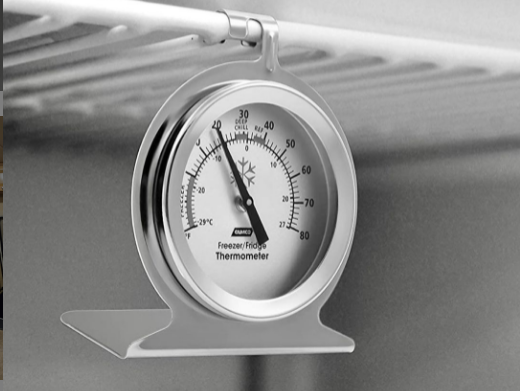
How Does an RV Refrigerator Work?
The RV refrigerator operates as follows:
1. The Compressor Cooling Process
Compressor refrigerators use a closed-loop cooling technology. This technology is on the mechanical compression of gas via a compressor. As a result, it uses mechanical refrigeration. There are three major parts of the cycle:
- Compression: The refrigerant vapor is pressurized to a more significant pressure by the compressor. This increased pressure causes the refrigerant vapor to heat up.
- Condensation: We can cool the heated refrigerant in the condenser. Like water vapor condensing on a cold surface, the vapor condenses into a liquid throughout the cooling process.
- Evaporation: The liquid refrigerant of high pressure is then into a more extensive tube via an expansion valve or a tiny hole. It brings the liquid’s pressure down to its boiling point. The refrigerant has a shallow boiling point, which removes heat from the refrigerator compartment. The vapor then returns to the compressor, where the cycle starts again.
While domestic refrigerators use a compressor as well, they operate when hooked to electricity. It restricts your possibilities in comparison to an RV DC-powered refrigerator.
Additionally, a domestic 120-volt refrigerator takes more energy as compared to other refrigerators. While a 120-volt alternative may be less expensive, the long-term discomfort and energy consumption may outweigh the early savings.
2. The Absorption Chemical Process
In an absorption RV, the fridge works by combining heat and chemical interactions between ammonia, water, and hydrogen gas. The process is complex, but like the compressor, the refrigerator is an enclosed system. Three stages define the cycle:
- Regeneration (Boiler): In this stage, we mix the refrigerant (ammonia) with water and heat until it boils. Because ammonia and water have different partial pressures, they separate. Water condenses farther down the system, while ammonia continues to rise to the top of the refrigerator. There it reacts with hydrogen and releases its heat to the atmosphere as liquid ammonia condenses.
- Evaporation: During this step, the ammonia in liquid form vaporizes in a low-pressure condition, absorbing heat from the environment. It occurs at the rear of the refrigerator’s fins and absorbs the refrigerator’s heat.
- Absorption: When ammonia vaporizes back to a gas, it mixes with water vapor and drops into a liquid water ammonia solution pool. The solution is then prepared for re-boiling in the regeneration chamber, where the procedure starts again.
This procedure occurs while your RV refrigerator is functioning to ensure that it remains functional. One advantage of this technique is that it is tranquil due to the absence of moving components. Using this method of cooling requires more time. If you’re planning a vacation, you should turn on your RV refrigerator for at least 24 hours to allow the appliance to cool before storing food inside.
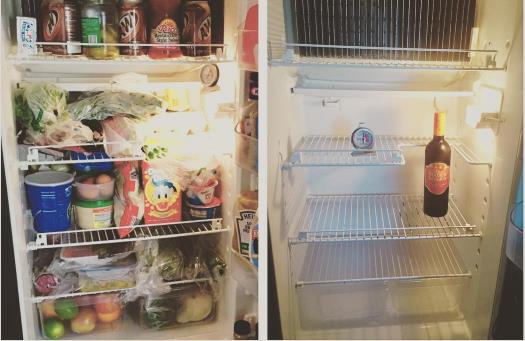
Pros and Cons of Different Types of RV Refrigerators
Let’s take a deeper look at the pros and cons of the various types of RV refrigerators.
1. 12-Volt Compressor RV Fridge
Following are the pros and cons of the 12-Volt compressor RV fridge.
Pros:
- Energy efficient
- Solar can power it
- It becomes chilly and can cool
- Provides more room for food storage
Cons
- Costly
- Noisy
- It needs a power source connection
2. 120V Compressor Fridge
Following are the pros and cons of the 120-Volt compressor RV fridge.
Pros
- Rapid and powerful cooling capabilities
- Cheaper than RV Refrigerators
- Increased storage capacity for food
Cons
- Noisy
- Not intended for use in RVs
- No latches on the shelves and doors
- Operates on 120-volts electricity
- Less efficient on battery power
3. Absorption RV Fridge:
Following are the pros and cons of the Absorption RV Fridge.
Pros:
- Silent absorption
- Consumes less energy
- Excellent choice for boondocking
Cons:
- Costly and inefficient
- Take longer to chill
- Smaller capacity to store food
- Vulnerable to external temperature changes
- Pose a risk of fire
4. Propane Refrigerator:
Following are the pros and cons of the Propane Refrigerator.
Pros:
- Versatile
- Chilling of food using a power connection
- Use electricity offered at your campground
Cons:
- Poor Temperature Regulation
- Less Space for Food
- Huge Expense
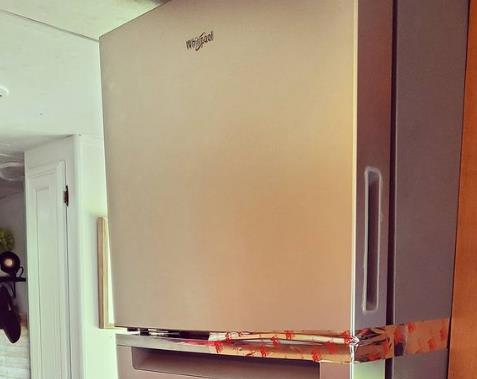
FAQ:
The following are some of the most asked questions about RV Refrigerators:
1. How to Troubleshoot and Repair a Camper Fridge
Several difficulties may arise while operating an RV refrigerator. The following are some of the most common problems and their associated troubleshooting tips:
· Burning out of Pilot Light:
There are a few possible reasons why your pilot light is not working. One possibility is that the thermocouple has failed. It regulates the amount of gas in the refrigerator’s burner at any given moment. If this component has reached the end of its useful life, it is time to replace it.
If changing the thermocouple does not resolve your pilot light issues, the pilot light may have too much air. It inhibits the pilot light from lighting and remaining lit. To repair it, gain access to the refrigerator’s gas valves. For the time being, turn them off.
Then we will reset them. If you have a newer model refrigerator, you may do all this by pressing the power button. Otherwise, you’ll have to reset the fridge yourself. Once your refrigerator is operational again, you should notice the pilot light illuminate. This time, we should maintain it.
· Leaking Cooling Unit:
It will need time and patience. To begin, locate the heating element’s 110-volt cables. These are white most of the time. Connect these to a 110 VAC element. Be cautious when doing so. Never be hesitant to bring in specialists if you believe the scale of a task is too enormous for you to handle.
While everything is not in use, you’ll need to devise a method for reading the temperature in the refrigerator. To do so:
- Fill a glass halfway with water and place a thermometer inside.
- Place this in the fridge and shut the door.
- Pause.
In 12 hours, the temperature should be around 43 degrees Fahrenheit. It’s acceptable if it’s somewhat lower. Within 24 hours, that temperature should fall to between 20 and 30 degrees Fahrenheit. This test may appear trivial, but it determines if the cooling unit leak is the only problem or something more serious.
For instance, if your refrigerator cannot reach such temperatures, it may be time to consider replacing the cooling unit. Otherwise, you must either contain and seal the leak yourself or get a professional to do it.
· Failed Fridge Burner:
To begin, become familiar with when to use electricity and when to use propane. For many kinds of RV refrigerators, you should operate your fridge on AC power rather than gas after reaching an altitude of 5,550 feet.
We can strain the liquid propane by measuring. If you do not change as you get greater heights, your burners will shut down. If this has already occurred, you can rectify the situation. The likelihood is that much air has entered the gas supply lines, contributing to the burner’s failure.
You should be able to remove the extra air by purging the cylinders of propane and changing the refrigerator’s settings. When using the fridge in the future, be careful to adjust the power source to your altitude.
2. 3 Way RV Fridge vs. 2 Way RV Fridge?
Compressor refrigerators are two-way refrigerators, whereas absorption refrigerators are three-way refrigerators. Thus, let us examine the primary distinctions between the two RV refrigerators.
· Efficiency:
When you live off the grid or are attempting to make a powered campsite work for you, energy-efficient appliances are critical. Compressor refrigerators are more efficient when connected to campsite electricity than absorption refrigerators.
Yet, if you’re venturing off the beaten path, a refrigerator of absorption type can keep your produce chilled. It will keep it chilled for two to three weeks on only nine kilograms of gas.
· Temperature:
When it comes to cooling, two-way refrigerators are the best. They maintain a cooler temperature in even the warmest temperatures, ideal if you’re going north. While technology advances, three-way refrigerators cannot keep food as cold as two-way refrigerators.
· Noise:
When all your appliances are in the same room as your bed, the noise they produce is essential for a restful night’s sleep. If you are a light sleeper, you need an absorption refrigerator. They are silent due to their heat-exchange technology.
A compressor produces the same degree of noise as a standard household refrigerator. It may appear peaceful until you have to sleep next to it! While a fried compressor will need more equipment to operate if you do not have access to a powered site or electricity, a three-way refrigerator will work regardless of where you are as long as you have a gas bottle on hand.
When it comes to selecting the appropriate van model, it is a matter of personal choice. But, three-way RV refrigerators are preferable to two-way refrigerators.
3. RV Fridge Vs. Residential? (What You Need To Know About RV Refrigerators)
Compressors in refrigerators are in homes to keep the air cold. RV refrigerators are to as absorption refrigerators. An absorption refrigerator warms up the gases and liquids discussed above.
These hot gases and liquids flow via tubes and into the refrigerator casing. They cause evaporation, drawing the heat away from the refrigerator’s interior. The fridge continues to chill while the evaporation process proceeds. The refrigerator employs either a flame or a heating element to warm the liquids and gases. We need a power source to keep a refrigerator functioning.
Conclusion:
With all these factors in mind, it’s easy to understand why RV refrigerators are convenient and beneficial. These devices are compact, easy to operate in various situations, and compatible with many power sources.
For most campers, the difficulty of routine maintenance and securing a level parking space is a minor price to pay. For the freedom to wander off the usual road and into new adventures while holding a nice, cold beverage, it is worth it.
In this article, we’ve discussed all the different types of RV refrigerators and their working. We have also answered some of the most asked questions about the RV refrigerators and their types.

